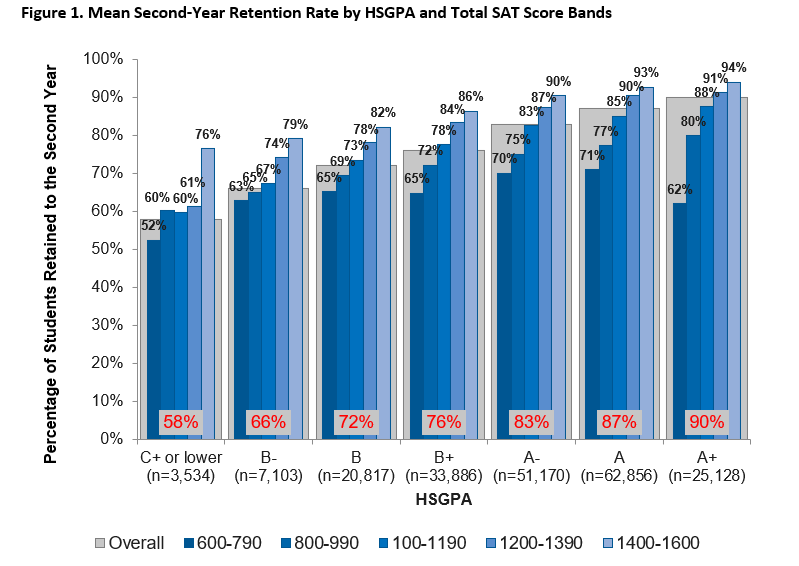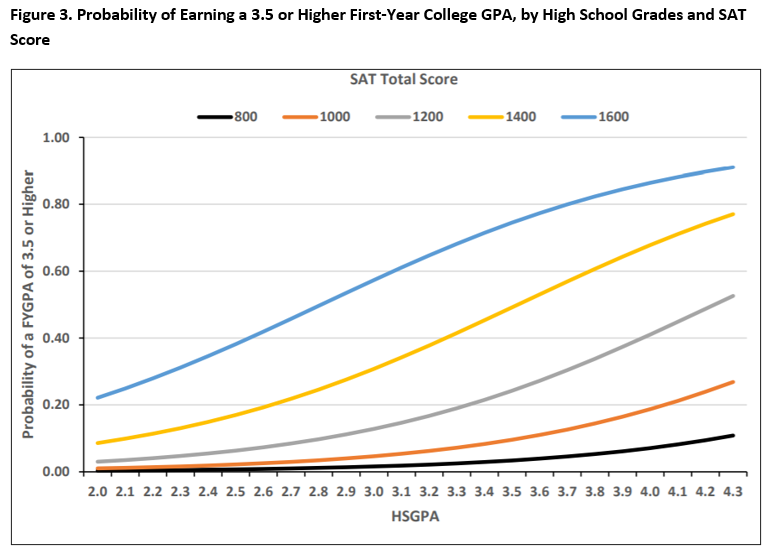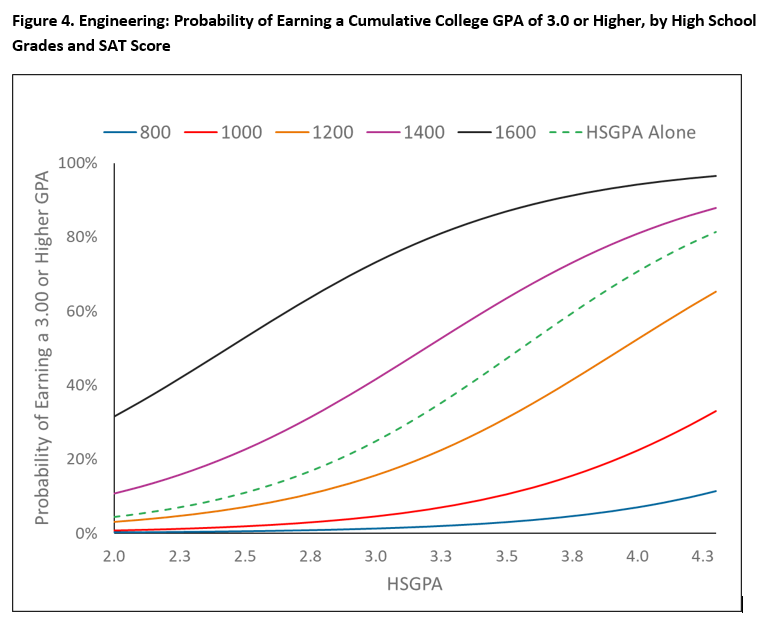Research Shows the SAT Helps Support Student Success in College
Although much of the world’s focus is on the SAT as used in college admissions, research demonstrates the many ways the SAT is useful in supporting college student success beyond admissions. Colleges utilize the SAT for retention and advising initiatives, course placement decisions, scholarship awarding, and understanding college major performance. In-depth research supports each of these uses of the SAT and some of that evidence is highlighted below.
1. Retention and Advising Initiatives
Research demonstrates that, for college students with the same high school GPA (HSGPA), SAT scores convey substantial information about students’ retention rates from the first to the second year of college. For example, if only HSGPA were known, the data in Figure 1 suggest that 76% of B+ students would be retained. Retention rates are very different for B+ students with an SAT score between 600 and 790 (65%) and B+ students with an SAT score between 1400 and 1600 (86%). Knowing an enrolled student’s SAT score enables colleges to target retention initiatives and academic advising resources to those who need it most.

Additional research on retention and advising shows how colleges can use SAT scores in combination with information from Landscape® on the environment where students lived and learned during high school to better identify students for advising and retention initiatives.
2. Course Placement Decisions
SAT Math scores provide important information, above and beyond high school grades, about a student’s preparation for math coursework in the first semester of college. Figure 2, drawn from research on a variety of domain-specific college performance outcomes, shows the probability of achieving a 2.5 or higher Math GPA in college varies substantially with a student’s SAT scores even among students with the same HSGPA. For example, among students with a HSGPA of 4.0, fewer than 45% are predicted to earn a 2.5 or higher if their SAT Math score is 400 or lower, while 85%–90% of students with SAT Math scores above 700 are predicted to earn a 2.5 or Math GPA in college.

3. Scholarships and Honors Programs
Research shows the value of SAT scores for determining merit-based scholarship decisions as well as admission to highly selective academic programs like honors programs. Because more than two-thirds of incoming college students are A students in high school, colleges need another tool to help distinguish academically strong students. Figure 3 shows that, even among students with a HSGPA of 4.0, their chances of earning a first-year college GPA of 3.5 or higher sit at around 40% if their SAT score is a 1200, about 70% if their SAT score is a 1400, and nearly 90% if their SAT score is a 1600. The discerning power of the SAT gives colleges greater confidence selecting and supporting students in scholarships and honors programs.

4.College Major Performance
New research on post enrollment uses of the SAT reveals that SAT scores can be used to predict performance in various college majors, helping colleges to better support all students to be successful in their chosen major program. Figure 4 shows that, among students with the same HSGPA, the probability of earning a cumulative college GPA of 3.0 or higher in engineering majors varies widely with their SAT score. For example, among engineering majors with a 4.0 HSGPA, about 20% of those with SAT scores of 1000 are predicted to earn a 3.0 or higher college GPA, while roughly 80% of those with SAT scores of 1400 are predicted to earn a cumulative college GPA of 3.0 or higher. Importantly, the dashed green line in Figure 4 shows that all of the information available through the SAT would be lost if colleges relied solely on HSGPA; based only on HSGPA, about 70% of students with HSGPA of 4.0 would be predicted to earn a 3.0 or higher cumulative college GPA in engineering. As colleges invest in efforts to diversify majors, like those in the STEM fields, the SAT can help colleges ensure that academic supports reach students who are predicted to struggle academically early in their major courses.
